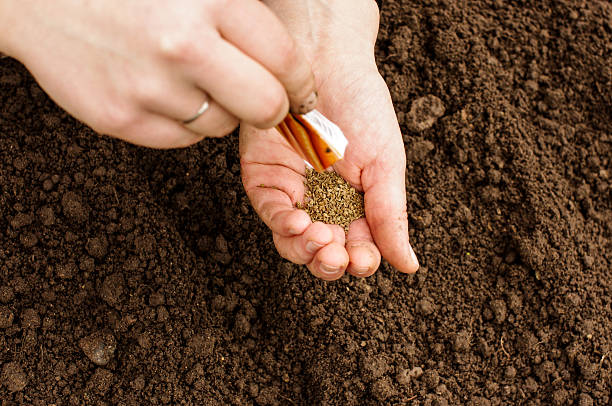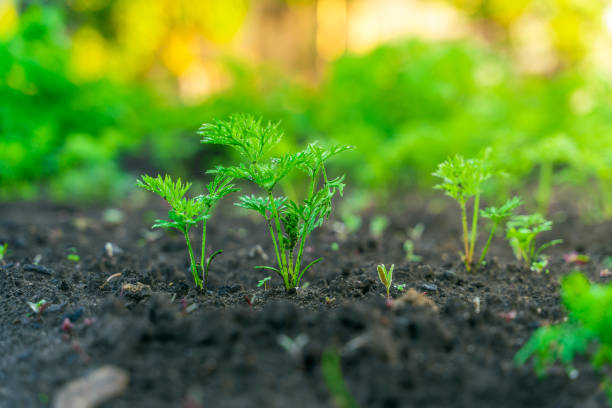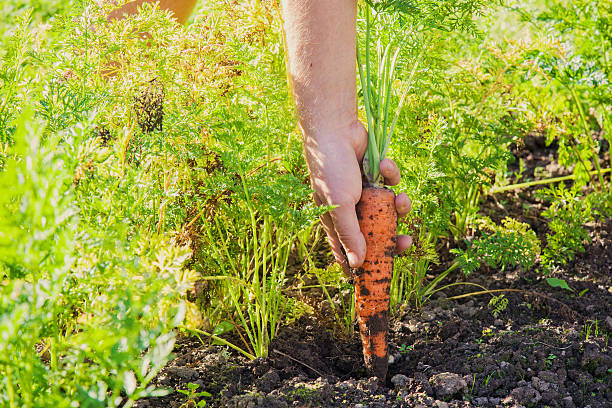Carrots are perhaps one of the most versatile vegetables to grow in your garden. They are full of vitamins such as vitamin A, dietary fiber, and antioxidants that make them not only healthy but also add a burst of flavor and color to your meals. Growing carrots at home is a very rewarding activity, as they can thrive in the smallest of spaces, be adaptable to different climates, and offer a harvest of crunchy, fresh roots that are far better in taste than those bought from a store. Whether you are a seasoned gardener or a novice, learning the step-by-step process to grow carrots will help you enjoy this wholesome vegetable straight from your garden. In this guide, we are going to take you through everything you need to know how to grow carrots . The other home garden vegetables guide (grow garlic , grow peas , grow onion).
Prepare the Soil
The most important thing to prepare the carrots to grow straight and healthy and flavorful is preparation of the soil. It requires loose, well-draining soil that will allow it to develop its roots with ease. Start by finding a sunny spot and digging down at least 12 inches (30 cm) deep to loosen all of the soil. the patches of clods by a garden fork or tiller and take out any rubble, rocks, or hardpan layers, which may prevent carrots from growing straight.
Add organic matter such as old compost to the soil and improve its structure and fertility. Avoid using fresh manure and high-nitrogen fertilizers since these can cause too much foliage, and forked roots. Ideally, slightly acidic to neutral soils with a pH of 6.0 to 6.8 are best for growing carrots. Test your soil first before making any changes and modify it if necessary using either lime or sulfur.
You have to sift the soil in a mesh screen or raking to ensure it reaches fine texture and uniformity to create the perfect environment in which the carrot seeds could sprout and grow. Prepared soil awaits your sown carrots for them to flourish towards a plentiful harvest of great home-grown carrots.
Plant the Seeds

Proper planting of carrot seeds is the key to healthy development and a productive harvest. Because carrots are root crops, they are better directly sown in the garden rather than being transplanted.
- Timing- The right timing to plant for your climate. Carrots also do well in cool weather conditions, so at the time of early spring after the last frost or late summer for a fall harvest, sow the seeds. The soil temperature for germination is between 50–85°F (10–29°C).
- Sowing: Sow the soil with shallow furrows about ¼–½ inch deep and spaced 12 inches apart. Sow the tiny carrot seeds thinly along the rows because overcrowding can hinder root development. Lightly cover them with fine soil or sand and press gently to ensure good soil contact.
- Watering: After sowing, water the soil gently without overwatering it. The carrot seeds take 1–3 weeks to germinate, so be patient.
- Succession Planting: For continuous use, sow carrot seeds every 2–3 weeks within the growing season.
Once the carrots sprout, thin them to 2–3 inches apart to give every plant enough room to grow straight, healthy roots.
Water and Care

The carrots require proper watering and care to grow healthy and flavorsome. Carrots require consistent observation throughout their growing period.
- Watering:
Carrots prefer moist but not waterlogged soil to grow well. Water should be deep once or twice a week to allow moisture to reach the root zone. The soil should not be allowed to dry completely, because it may cause the roots to split or grow poorly if it is alternately wet and dry. In the initial stages of growth, the soil should remain consistently damp to facilitate seed germination and seedling establishment. Mulching around the plants will help retain moisture and decrease evaporation. - Weeding:
Carrots grow very slowly in the beginning and this enables weeds to compete for water and light. Weed the plants constantly, taking care not to damage the shallow roots of the carrots. - Thinning:
Thin the carrot seedlings to about 2–3 inches apart once they are a few inches tall. Overcrowded carrots will not develop well so spacing is essential for their development. - Fertilizing:
Carrots are light feeders and typically don’t require heavy fertilization. If needed, use a low-nitrogen fertilizer to encourage root development rather than excessive leaf growth.
By following these steps, you’ll give your carrots the best care to produce a healthy and abundant harvest.
Harvesting

Harvesting carrots at the right time ensures that the flavor and texture will be best. Knowing when and how to harvest is important for a successful yield.
- When to Harvest
Carrots usually take around 60–80 days before becoming ready for harvest. The size of carrots can be estimated through how much of the root protrudes from the soil, and thus giving you a heads-up on its size. The best way to check is simply by brushing some of the soil back to expose the top if the root has reached ½–1 inch. Baby carrots can be taken a little earlier to be sweet and tender. - How to Harvest
Start with loosening soil around carrots not to crack them when pulling out from the ground. Using a fork or spade dig gently about 6 inches around the base. Gather carrot tops together at the base and pull slowly. If carrots are hard to pull up, loosen surrounding soil to avoid damaging. - Post-Harvest Handling:
Remove green tops at harvest, cutting as much of the stem as is possible. Wash carrots by gently swishing them to loosen soil; you do not necessarily need to scrub if you intend to keep them. - Storage
Store in refrigerator if necessary soon or layered in sand or sawdust in a dry cool place for long storage. If well cared for fresh carrots will last months.
Careful harvesting means crisp, sweet carrots, fresh from your garden!
Conclusion
It’s that great feeling and satisfaction that would compare to nothing at any point in time when growing carrots because one is either a greenhorn or an old seed-sower. As soon as you pick the right carrot variety, carefully prepare the ground, and give them care, you’ll reap your basket of fresh, crunchy carrots directly off the garden. Pay attention to the details such as thinning seedlings, watering evenly, and protecting your crop from pests and diseases. Patience and a couple of simple techniques master the art of growing carrots and the difference homegrown makes.
Start small, experiment with different varieties, and watch your efforts come to life. The garden can give you far more than just food-it gives you a chance to connect with nature, the satisfaction of cultivating something yourself, and the knowledge of the effort that goes into harvesting. Happy gardening!
2 thoughts on “How To Grow Carrots”